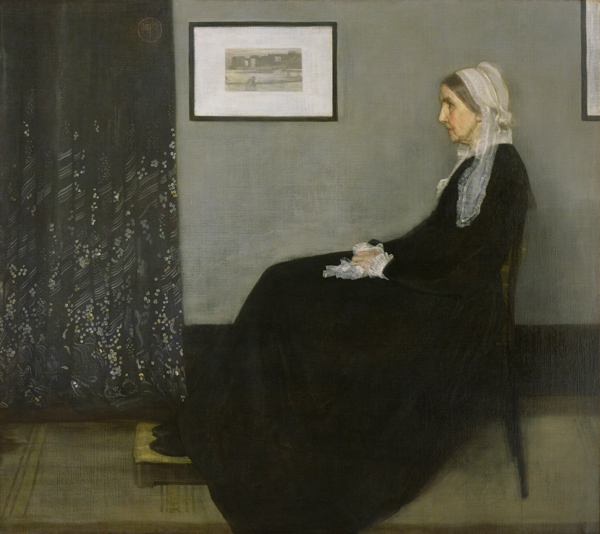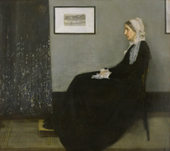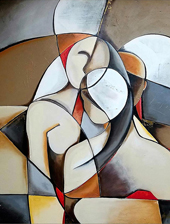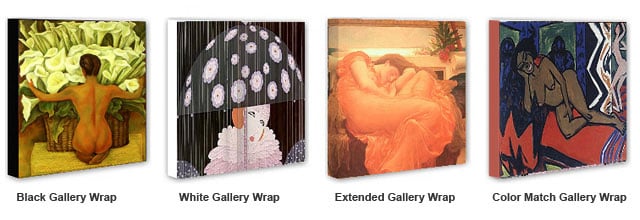Whistler's Mother 1871 By James McNeill Whistler
Whistler's Mother by James Abbott McNeill Whistler
Whistler’s Mother painting was completed in 1871. It is one of the most famous American artworks. The formal title of the painting is Arrangement in Grey and Black No. 1. The sitter is Anna McNeill Whistler, the artist's mother. The painting is on display at the Musee d'Orsay, Paris. The original oil on canvas painting is 67 x 64 inches. The work is a true American cultural icon, even being described as the "Victorian Mona Lisa." Whistler's paintings are associated with Tonalism art and the American Gilded Age, which prevailed in America from around 1877 to 1900.
What does Whistler’s Famous Painting Represent?
Whistler's mother, Anna, supported his art career from the very start, enrolling him at the St Petersburg Imperial Academy of Arts from a young age. Several unverified reports cite Anna Whistler only posed for her son because his original model failed to arrive. He had planned a standing portrait; however, Anna was 67 when Whistler's painting started, and she was uncomfortable standing for long periods. Whistler consequently provided the now-famous chair.
Akin to James McNeill Whistler’s Nocturne in Blue and Gold, The Artist's Mother painting exemplifies the artist’s fascination with color. Whistler uses his characteristically liquid paint, scraped over the canvas in long sweeping strokes; the gray wall takes a form all of its own. He was fascinated by Japanese culture and calligraphy techniques, and the decorative pattern of the curtain represents Whistler's stylistic experiments.
While James McNeill Whistler oil paintings rarely focus on symbolic representations, critics speculate that this famous painting has a deeper meaning. The dark color palette and stiff posture suggest a somber take on parental duty, aging, and mourning. Anna died three years after the painting was finished, at the age of 77.
Why is Arrangement in Grey and Black No. 1 So Important?
Today, Whistler’s Mother exemplifies themes of family values, motherhood, and the Victorian era. It graces American stamps, postcards, statues, advertisements, and pop-culture parodies. Whistler's Mother was originally exhibited at the Royal Academy in 1872 and was not initially well received. The Academy panel nearly rejected the painting, causing Whistler substantial anguish. Also, the title "Arrangement” proved problematic for the traditional British art world. The art critics could not understand why a portrait painting would be given such a strange title.
This seemingly insignificant debate on terminology was necessary, and Whistler added the explanatory note 'Portrait of the Painter’s Mother.' However, due to this near-rejection, James Whistler never submitted paintings to the Royal Academy again. A great supporter of 'art for art’s sake.' The term was first used by Victor Cousin, a French philosopher, to support his theory that art requires no justification. Whistler was particularly vexed at the continued focus on the sitter's identity. Despite this, the Scottish historian and philosopher Thomas Carlyle was particularly impressed by the painting, and as a result, he sat for the artist, leading another Whistler painting, Arrangement in Gray and Black, No. 2 1872. This oil on canvas is based on the same basis as Arrangement in Black and Grey No 1, utilizing a similarly muted color palette and formal seated position.
Where is Whistler’s Mother Original Oil Painting?
Whistler's Mother painting is of Anna Whistler posing at the artist’s home in Cheyne Walk, Chelsea. Whistler moved to London in 1863, sharing a home and studio with his mother. Known as the White House, the massive costs of building this residence. Whistler is known to have a litigious and combative personality, and an associated and costly court case almost bankrupted the artist. In terms of the famous painting itself, it was acquired in 1891 by the Musée du Luxembourg and is a rare example of important James McNeill Whistler paintings held outside the United States.
In the light of his previous rejection by the British art community, the sale of his painting represented a vindication for James McNeill Whistler. Indeed, the artist wrote a letter to a friend describing his treatment with “deference and respect” on the continent and as a “tremendous slap in the face” to the “Academy and the rest.”
Buy art reproductions on canvas by James McNeill Whistler. Discover our extensive catalog of famous painting replicas of tonalism paintings by artists George Innes, Thomas Wilmer Dewing, and John Henry Twachtman.
We offer a 100% money back guarantee or replacement service. If for any reason you are dissatisfied with your painting please contact us within 7 days of receipt, advising the reason you are unhappy and we will provide you with all the information you need for its return or replacement.
We ship free to anywhere in the world via FedEx or DHL expedited service with online tracking.
Your painting will be shipped rolled in strong plastic tubing, ready for stretching and/or framing locally. This is the conventional method of transporting hand-painted oil on canvas. Learn more about how your painting is shipped.
We are able to offer a framing service intercontinental U.S. Please contact us if you would like a quotation. Alternatively, should you prefer, we can recommend a framer in your area.
Notes About Your Painting
Please note that replica oil paintings are finished with an additional 10cm (4") of extra canvas on all sides, allowing ample surplus canvas for stretching and framing.
Cannot Find What You Are Looking For?
Reproduction Gallery Information
Customer Service
(Send Us A Message)
Tel: (503) 937 2010
Fax: (503) 937 2011








